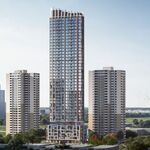+1
LRT is absolutely ideal for these kinds of situations. And I really hope developments like these spur an LRT boom in secondary urban centres in Canada. Places like Kingston or Halifax or Saskatoon could really use LRT.
I find that Kingston is too small, too spread out to be able to host LRT. There are a few trip generators: Queen's, Downtown, perhaps St. Lawrence College, not RMC. It had two or three streetcar lines until the 1930s, yes, but buses will best serve places like Kingston. Kingston Transit did significantly improve transit a few years ago, though a bus trip from the VIA station to downtown has become harder to do with a transfer now required and a circutious routing.
Halifax starts to get around the size where LRT might work, but it is also very spreadout despite a centralized downtown. Buses and ferries do the job fine (I've used Metro Transit buses and ferries before).
Calgary and Edmonton are great examples of LRT, Edmonton's LRT so much more useful with the southern extensions. K-W really made the effort, and with a lucky geography (all their pearls just about in a straight line), despite a smallish population, will be a great example.
Hamilton has a great case, with the East-West line between Dundas, Mac, Downtown, Eastgate being a very busy corridor (1/10, you can count the 3 Cannon and 5 Delaware too).
I think most of the corridors in Ontario suitable for LRT are the ones getting LRT, with a few exceptions (cough, Sheppard), and not sure about Dundas in Mississauga if that will be LRT or "BRT", it is a worthy corridor.





